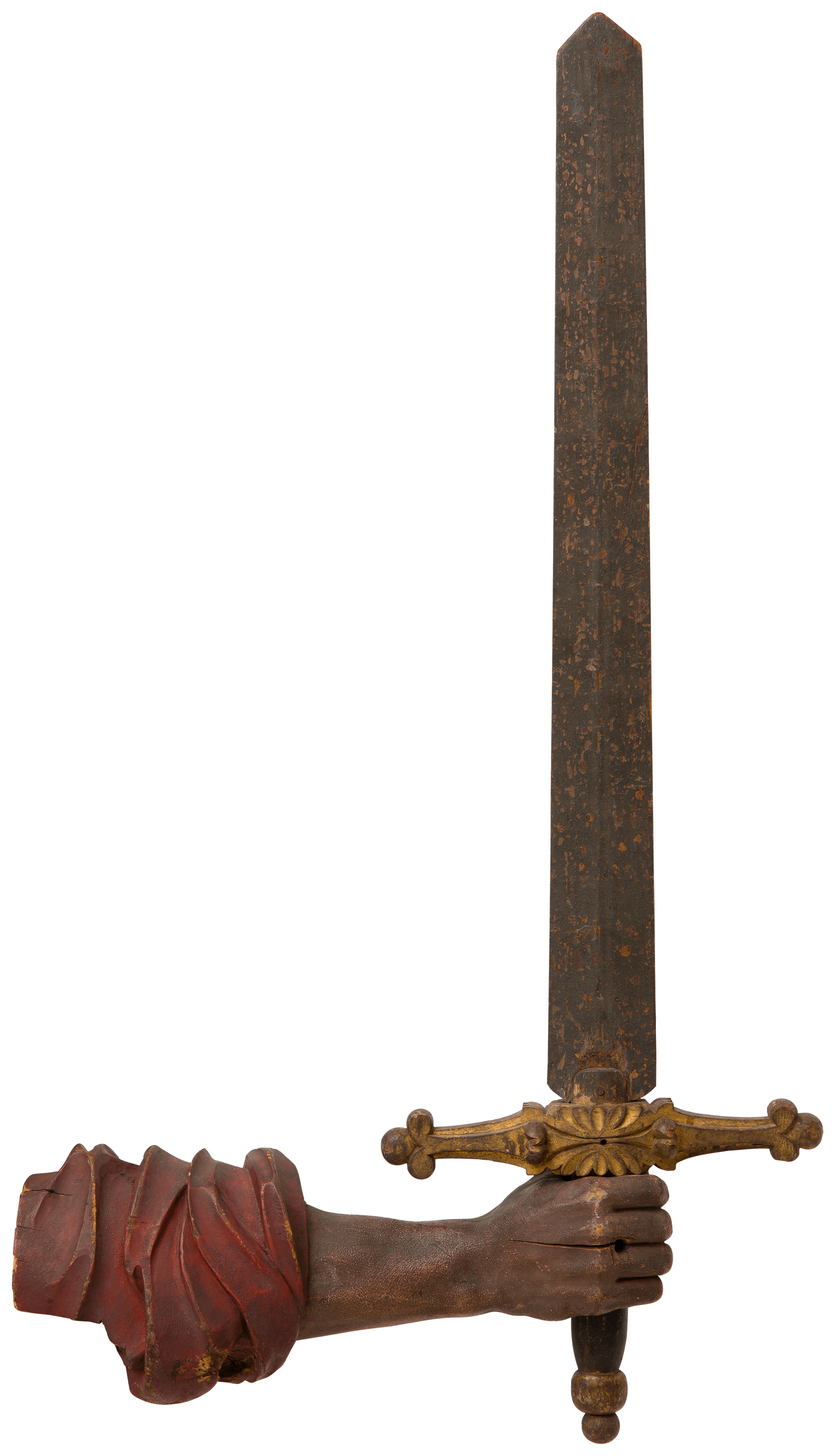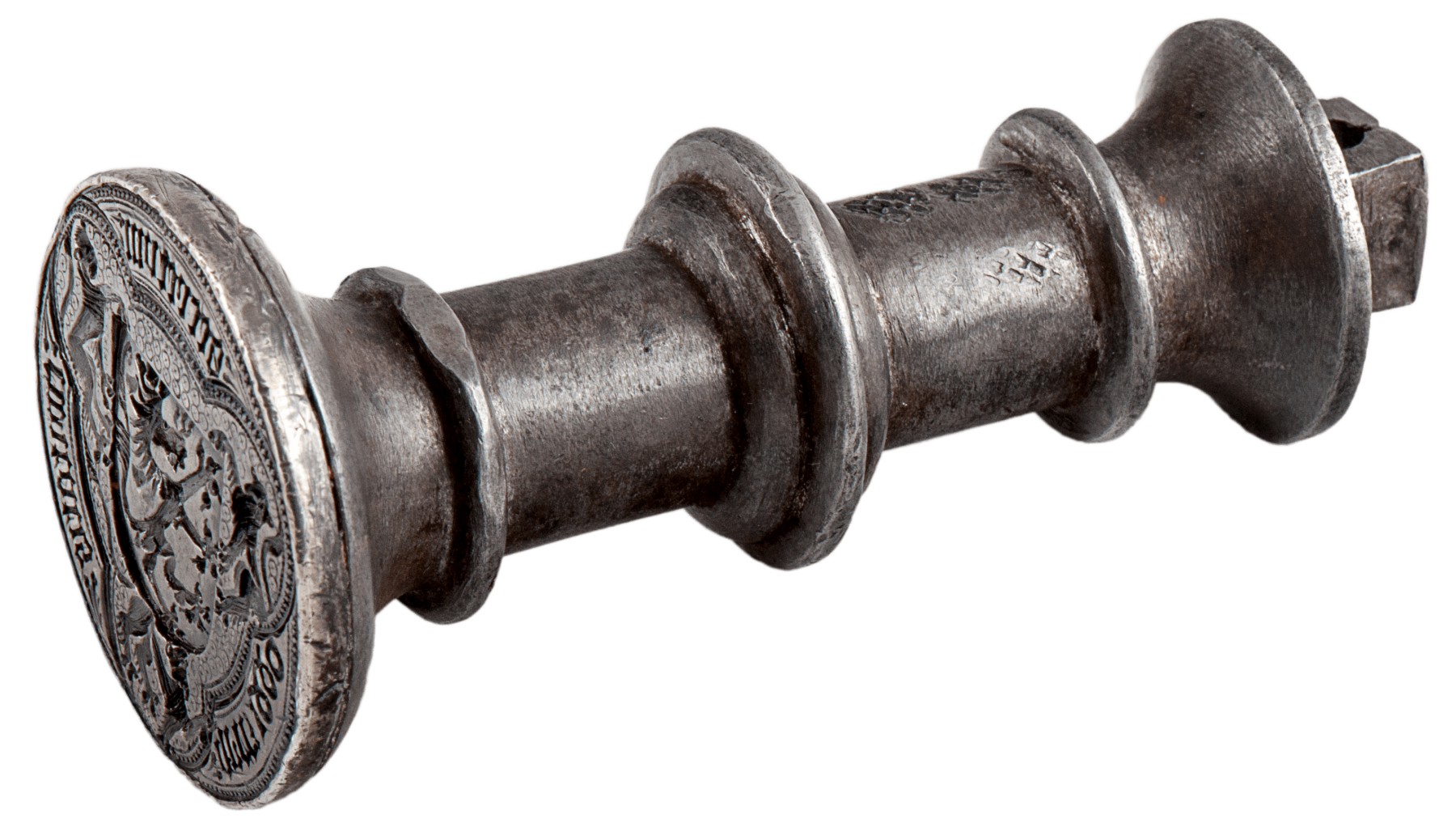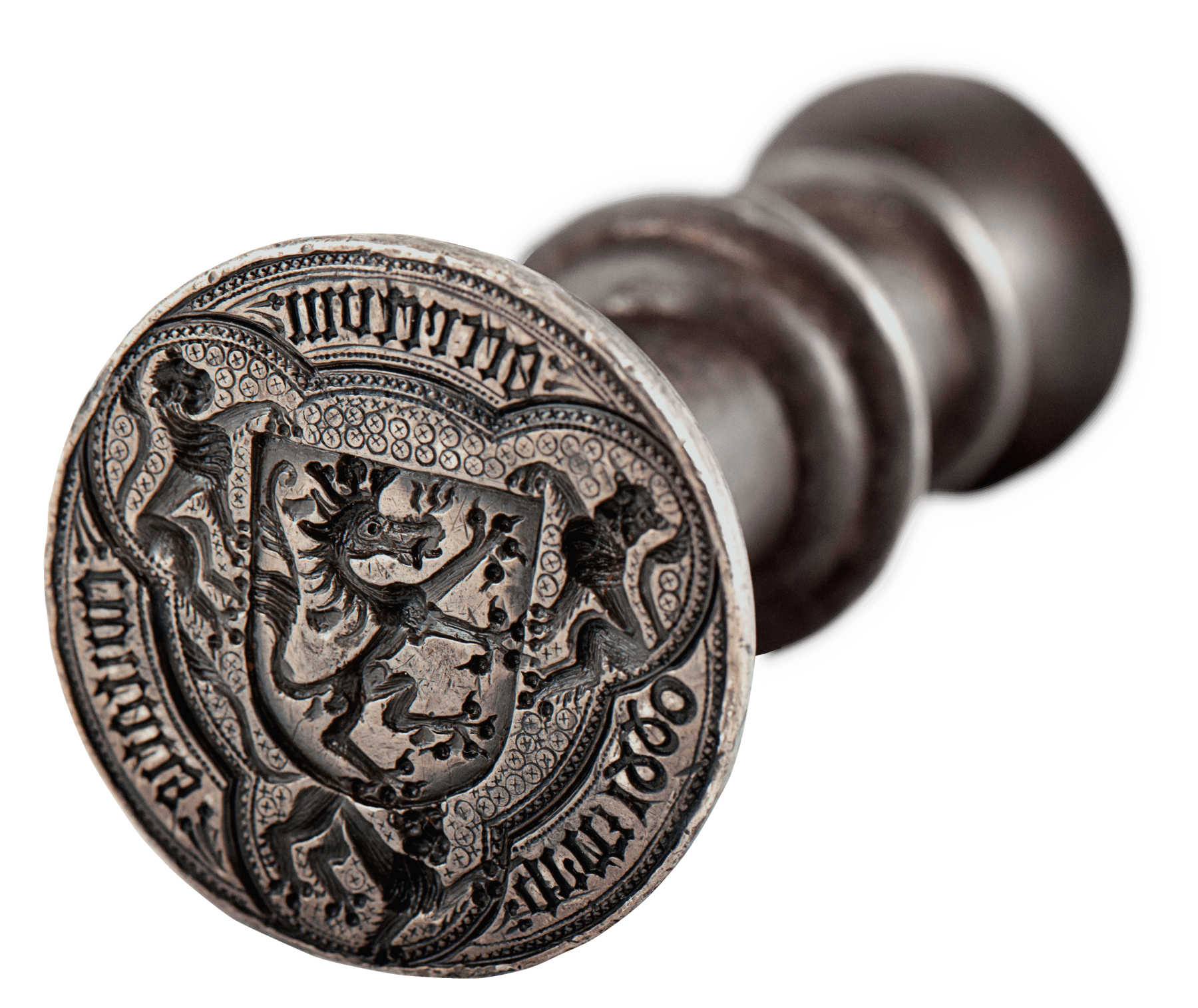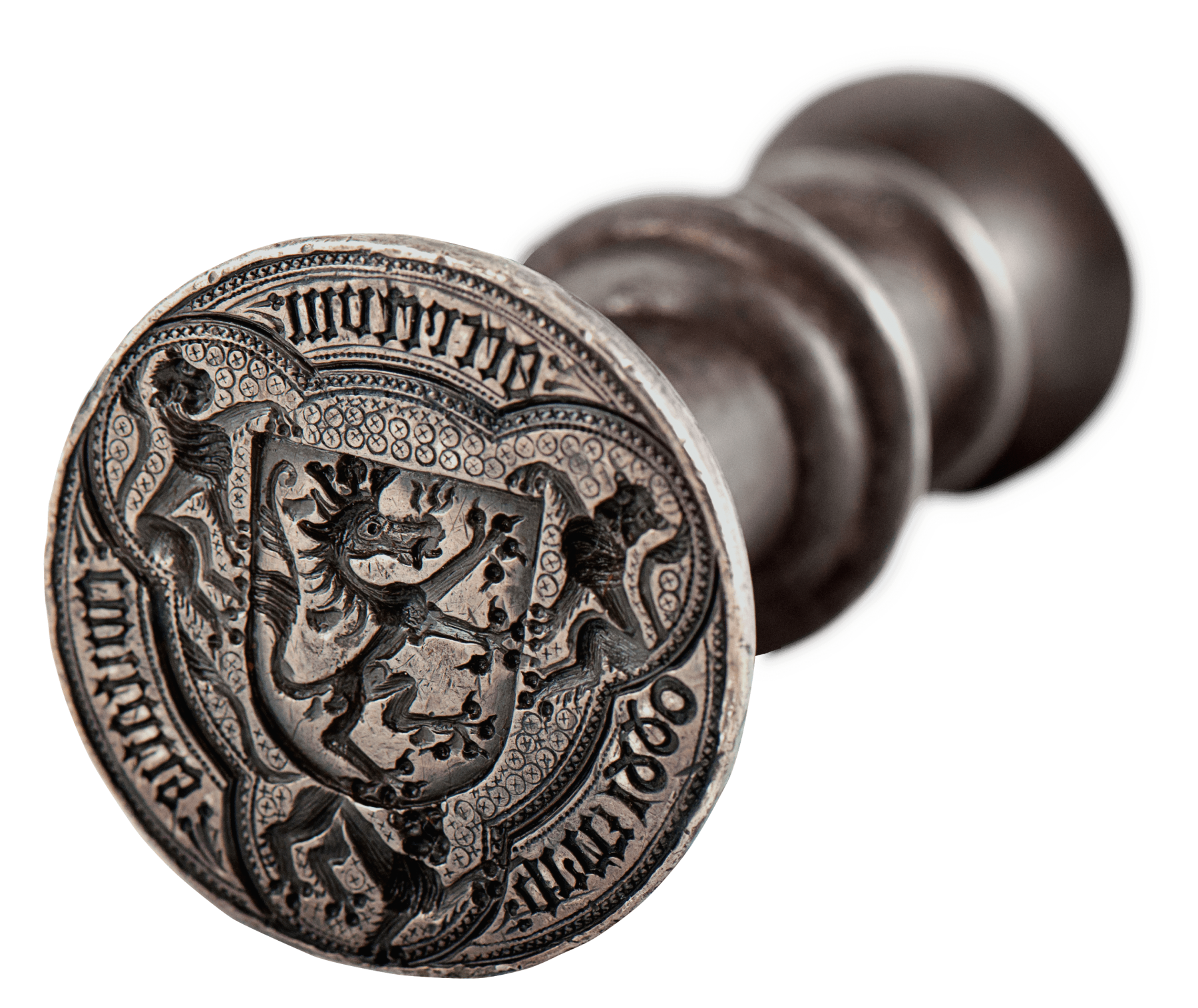
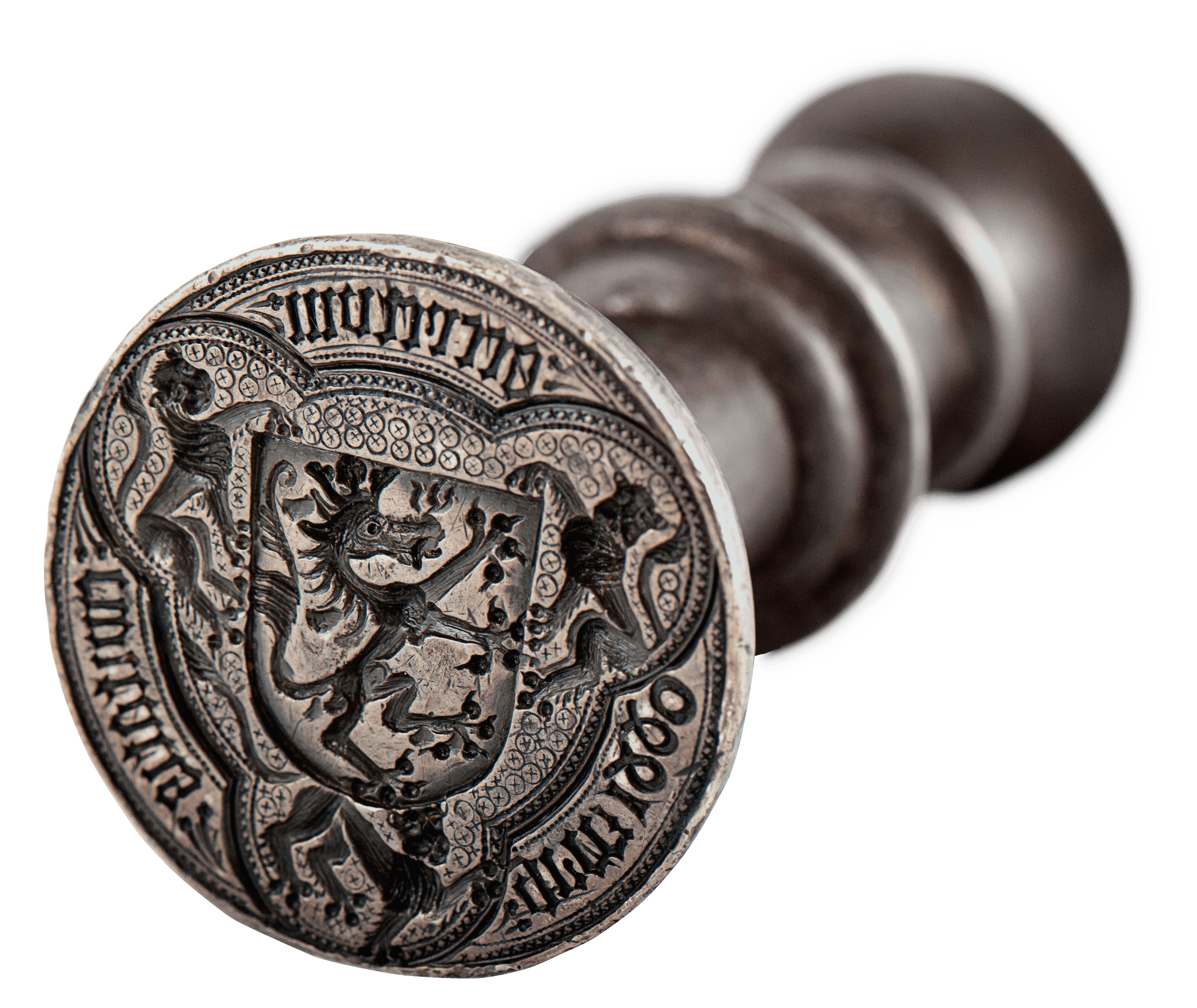
Oldest Preserved Seal Stamp of the Municipality of Graz 1440
In the Sign of the Panther
City seals have been among the main symbols of a citizenry (civitas) becoming more and more autonomous and self-confident since the 12th century. They were a visible sign of the citizens who were authorised to participate in the political life and an important element of legal security in communal documents. As from 1261, several seal variants decorated with the panther as heraldic animal have been certified for Graz. This item dated to 1440 is the oldest surviving seal stamp for the production of these seals (Typar).
Engraved silver, iron
11 × 4,5 x 4,5 cm
Graz Museum / Photo: Edin Prnjavorac
The Panther of Graz
The panther (Panthier oder All-Tier in German) of Graz is a hybrid of a horse’s head, a lion’s mane, a lion’s tail, furry hind legs and claws. In contrast to the Panther of Styria, which has bull horns, the heraldic animal of Graz wears a crown and flames come out of all its body orifices. Originally, it was the heraldic animal of Margrave Otakar III from the Traungau family based in Steyr. With the elevation of Styria to dukedom in 1180 it became the coat of arms of the province and, in the middle of the 13th century, also the coat of arms of the city.

